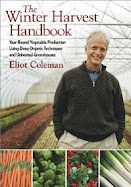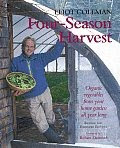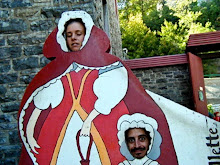Miss Henny has had a challenging life. Not the usual kind of born-in-the-ghetto story that you're expecting, but rather a life plagued by misunderstanding and the lack of acceptance that follows bookish girls who skip a grade. Except, paired with a heavy dose of dumb in place of the bookishness. But don't worry - we can still craft this into a makeover story.
She was given to my friend Kate along with 6 other unsexed chicks as an Easter present. Later, after many mornings of countless crows, it became obvious that Henny was the only lady in the group and also that having 6 roosters sucks. So Kate made plans to drop all the birds off to be processed. Around the same time, Henny laid her first egg.

Keeping a single hen through the winter didn't make much sense, and killing her right as she began to lay was also an odd choice. So, we offered to take her in, as we had just lost Miss Meatloaf to a bad case of "sorry we had to break your neck." These things happen. Henny was bigger than our birds, the only one with a full beak, about six months younger, and by far the most beautiful. She was doomed. The girls picked on her and at her for quite some time, and she seemed pretty sad. Plus, she always wore a smirk when I would pet the other girls as they 'assumed the position' for a rooster. She had gone way beyond heavy petting, and frankly, life at our place was boring. Having transferred from public school to a private all girls school, I related to her pain.
For much of the time that we had Henny, she was able to roam the yard freely. Free ranging chickens are at their happiest - they forage for worms, bugs and greens, and most importantly they leave all that petty BS back in the coop. Kind of like having a reprieve from mockery during school breaks when everyone is too busy having fun to care about how big a loser you are. Miss Henny was actually doing ok. But when summer came and all of the gardens in the neighborhood got planted, we had to lock the girls up again. Miss Henny slid back into a lethargic trance only worn by the most far gone of social outcasts. She wouldn't leave the (unfertilized) eggs and barely ate. She was broody.
Around this time I spoke with my friend Kristine, who is a caretaker on the island directly across from our shoreline with her husband, Tim. Together, we've been keeping a beehive on the island. She was waiting for a break in the weather so that she could boat in and get some more laying hens since hers were starting to slow. And that's when Miss Henny's future flashed before my eyes. And she was slightly more popular.

On this particular weekend, my parents and uncle were visiting and my nephew and brother and law were also around, entered in the LCI Fishing Derby. My dad, who grew up working on the family chicken farm, volunteered to manhandle Miss Henny into her cage. We all decided to make the trip together.
Jack carried her down to the dock to wait for Kristine while Josh fished. Miss Henny really didn't have much to say at any point during this adventure, but usually she's a loud, high-pitched squawk-chirper.
It was a windy, choppy, yet beautiful day for a boat ride. Jack put a nightcrawler in the cage with Henny, but she just sat on it. She seemed numb to the whole affair.
After we docked and unloaded (we had some bee maintenance to deal with) we packed up a cart that Kristine was towing behind an ATV - I sat on the back while my family found room in the cart.
Kristine's dogs followed us everywhere we went - Jackson even has his own seat in front the windshield.
Our trip to the barn included a view of the garden, and a visit with the alpacas.
And then, it was time. Henny needs to spend a few days in a cage in order to protect her form all of the 'mean girls in the lunch room' per se- but then she'll have a lot more space and freedom, as well as the love of a rooster.
Her new family includes some birds who look a lot like her - Buff Orpington/Black Star mixes, as far as I know.
No pictures of our bee tasks - sorry! I'm sure my mom took some, and maybe I'll insert them later. Needless to say, it was a great tour, and we saw lots of amazing sights. Solar panels, cisterns, a beautifully constructed log cabin - it is truly an inspirational place.
Back at the dock, Jack and Josh were still fishing. They caught 23 fish at Savage Island, and 45 for the day. But sadly, they did not 'catch the big one.'
And then, just like that, it was all over. Miss Henny was gone. She was the funniest chicken I've known, but I was usually laughing at her, and not with her (not like Miss Rita, now there's a clever girl.) I'm kind of looking forward to seeing her again, and that in itself is a makeover of sorts. ??
So, until Kristine comes to get me, or I patch the rest of the holes in our canoe, I'll just have to wait. My biggest hope is that she becomes a mother - she really likes to sit on eggs.








































































